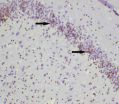(Press-News.org) ARCATA, Calif.—Woodland salamanders perform a vital ecological service in American forests by helping to mitigate the impacts of global warming.
Global warming occurs when greenhouse gases like carbon dioxide are released into the atmosphere. Woodland salamanders facilitate the capture of this carbon before it is released by feeding on invertebrates (beetles, earthworms, snails, ants, etc.) that would otherwise release carbon through consumption of fallen leaves and other forest debris. Woodland salamanders are the most common vertebrate species in American forests; consequently, these small, seldom-seen animals may play a significant role in regulating the capture of carbon from leaf litter in forest soils.
Dr. Hartwell Welsh, Jr., research wildlife biologist at the U.S. Forest Service's Pacific Southwest Research Station (PSW), helped conduct a study in Northwestern Calif. that examined how woodland salamander predation on invertebrates indirectly affects the amount of leaf litter retained for soil-building where nutrients and carbon are captured at the litter-soil interface.
The objective of the study was to investigate the role of salamanders in regulating invertebrate abundances and how that influenced leaf litter retention. The study included soil moisture as a covariate, and field enclosures on the forest floor to quantify the effects of woodland salamanders. The study was conducted over two rainy seasons, and found that woodland salamander predation on invertebrates suppressed some populations of invertebrates and released others, with the overall result of increased litter retention and carbon capture in the soil. However, the strength of the effect was modulated by the timing and amount of precipitation.
This research is unique and important, and will increase public understanding of how the impacts of global warming may be countered and raise awareness of the ecological role woodland salamanders play in the forest carbon cycle. "The renowned evolutionary biologist E.O. Wilson once said it is the little things that run the world," Dr. Welsh said. "While Wilson probably had in mind invertebrates, I think he would agree that our research on the influence of one of the primary predators on invertebrates, and their influence on the forest carbon cycle, is a good example of what he was talking about."
INFORMATION:
The full article can be read at: http://www.treesearch.fs.fed.us/pubs/45487
Headquartered in Albany, Calif., the Pacific Southwest Research Station develops and communicates science needed to sustain forest ecosystems and other benefits to society. It has research facilities in California, Hawaii and the U.S.–affiliated Pacific Islands. For more information, visit http://www.fs.fed.us/psw/.
Predation on invertebrates by woodland salamanders increases carbon capture
2014-03-10
ELSE PRESS RELEASES FROM THIS DATE:
Parkinson's disease: Quickly identifying patients at risk of dementia
2014-03-10
This news release is available in French. It may now be possible to identify the first-stage Parkinson's patients who will go on to develop dementia, according to a study conducted at the Institut universitaire de gériatrie de Montréal by Dr. Oury Monchi, PhD, and his postdoctoral student, Dr. Alexandru Hanganu, MD, PhD, both of whom are affiliated with Université de Montréal. These findings were published in the journal Brain.
Although Parkinson's disease is generally associated with motor problems such as trembling or rigidity, people with this disease actually ...
NASA satellites eye troublesome Tropical Cyclone Lusi
2014-03-10
Tropical Cyclone Lusi has spawned warnings and watches in the Solomon Islands, Vanuatu, and New Zealand as it moves through the South Pacific Ocean. NASA's Terra and Aqua satellites provided visible and infrared views of the storm that revealed it has become better organized.
NASA's Terra satellite captured a visible image of Tropical Cyclone Lusi over Vanuatu on March 9 at 23:30 UTC. The image showed towering thunderstorms surrounded the center and northwestern quadrants of the storm.
The next day at 02:17 UTC, NASA's Aqua satellite passed over Lusi and captured infrared ...
US cocaine use cut by half, while marijuana consumption jumps, study finds
2014-03-10
The use of cocaine dropped sharply across the United States from 2006 to 2010, while the amount of marijuana consumed increased significantly during the same period, according to a new report.
Studying illegal drug use nationally from 2000 to 2010, researchers found the amount of marijuana consumed by Americans increased by more than 30 percent from 2006 to 2010, while cocaine consumption fell by about half. Meanwhile, heroin use was fairly stable throughout the decade.
Methamphetamine consumption dramatically increased during the first half of the decade and then declined, ...
Scientists build thinnest-possible LEDs to be stronger, more energy efficient
2014-03-10
Most modern electronics, from flat-screen TVs and smartphones to wearable technologies and computer monitors, use tiny light-emitting diodes, or LEDs. These LEDs are based off of semiconductors that emit light with the movement of electrons. As devices get smaller and faster, there is more demand for such semiconductors that are tinier, stronger and more energy efficient.
University of Washington scientists have built the thinnest-known LED that can be used as a source of light energy in electronics. The LED is based off of two-dimensional, flexible semiconductors, making ...
A signal to spread: Wistar scientists identify potent driver of metastasis
2014-03-10
An international team of researchers led by scientists at The Wistar Institute have discovered and defined LIMD2, a protein that can drive metastasis, the process where tumors spread throughout the body.
Their study, published in the March issue of the journal Cancer Research, defines the structure of LIMD2 and correlates the protein in metastatic bladder, melanoma, breast, and thyroid tumors. Wistar scientists have also developed and patented a monoclonal antibody that may one day be used as a prognostic test to see if tumors have LIMD2, and plans are underway to create ...
Malnourished children are better fed when mothers have network of peers
2014-03-10
URBANA, Ill. – Women in rural India who participate in a vocational training program learn more than just life skills. A recent University of Illinois study found that mothers who participated in a program designed to educate and empower women gained a network of peers that led to increased bargaining strength in the home, and significantly improved their children's consumption of rice and dairy.
"Prior to participating in Mahila Samakhya, which loosely translates to women of equal value, most of the participants reported regularly communicating with fewer than five ...
New research shows elevated mercury from in-ground wastewater disposal
2014-03-10
As towns across Cape Cod struggle with problems stemming from septic systems, a recent study by a Woods Hole Oceanographic Institution (WHOI) scientist focuses on one specific toxic by-product: mercury. In a study of local groundwater, biogeochemist Carl Lamborg found microbial action on wastewater transforms it into more mobile, more toxic forms of the element.
His findings were published in Environmental Science and Technology in November 2013.
Mercury (Hg) is a toxic trace metal. Wastewater contains small amounts of it, but Lamborg found the chemical processes that ...
What's new in autism spectrum disorder? Harvard Review of Psychiatry presents research update
2014-03-10
Philadelphia, Pa. (March 10, 2014) – Recent years have seen exciting progress in key areas of research on autism spectrum disorders (ASD): from possible genetic causes, to effective treatments for common symptoms and clinical problems, to promoting success for young people with ASD entering college. Updates on these and other advances in ASD research are presented in the March special issue of Harvard Review of Psychiatry. The journal is published by Lippincott Williams & Wilkins, a part of Wolters Kluwer Health.
"Autism is one of the most challenging disorders to ...
Phosphorylation of tau protein in rats subjected to cerebral ischemia-reperfusion injury
2014-03-10
Transient brain ischemia has been shown to induce hyperphosphorylation of the microtu-bule-associated protein tau. To further determine the mechanisms underlying these processes, Dr, Bo Song and co-workers from School of Life Sciences, Tsinghua University in China found for the first time that the interaction of tau with glycogen synthase kinase (GSK)-3β and protein phosphatase 2A is altered during transient brain ischemia. In addition, the researchers found that the neuroprotective function of lithium chloride may depend partly on the altered phosphorylation of tau, ...
Pretreatment with SSTF prevents hippocampal neuronal apoptosis due to cerebral infarction
2014-03-10
Focal cerebral ischemia-reperfusion may lead to neuronal loss in the hippocampus, which is regarded as one of the basic pathological mechanisms underlying cognitive impairment. The neuronal apoptosis plays an important role in cerebral infarction, determining the number of loss of neurons and infarct volume. Growing evidence has suggested that Chinese herbs can inhibit hippocampal apoptosis caused by ischemia-reperfusion. Prof. Shumin Zhao and team from Chengde Medical College in China pretreated rats with scutellaria baicalensis stem-leaf total flavonoid (SSTF) intragastrically ...




